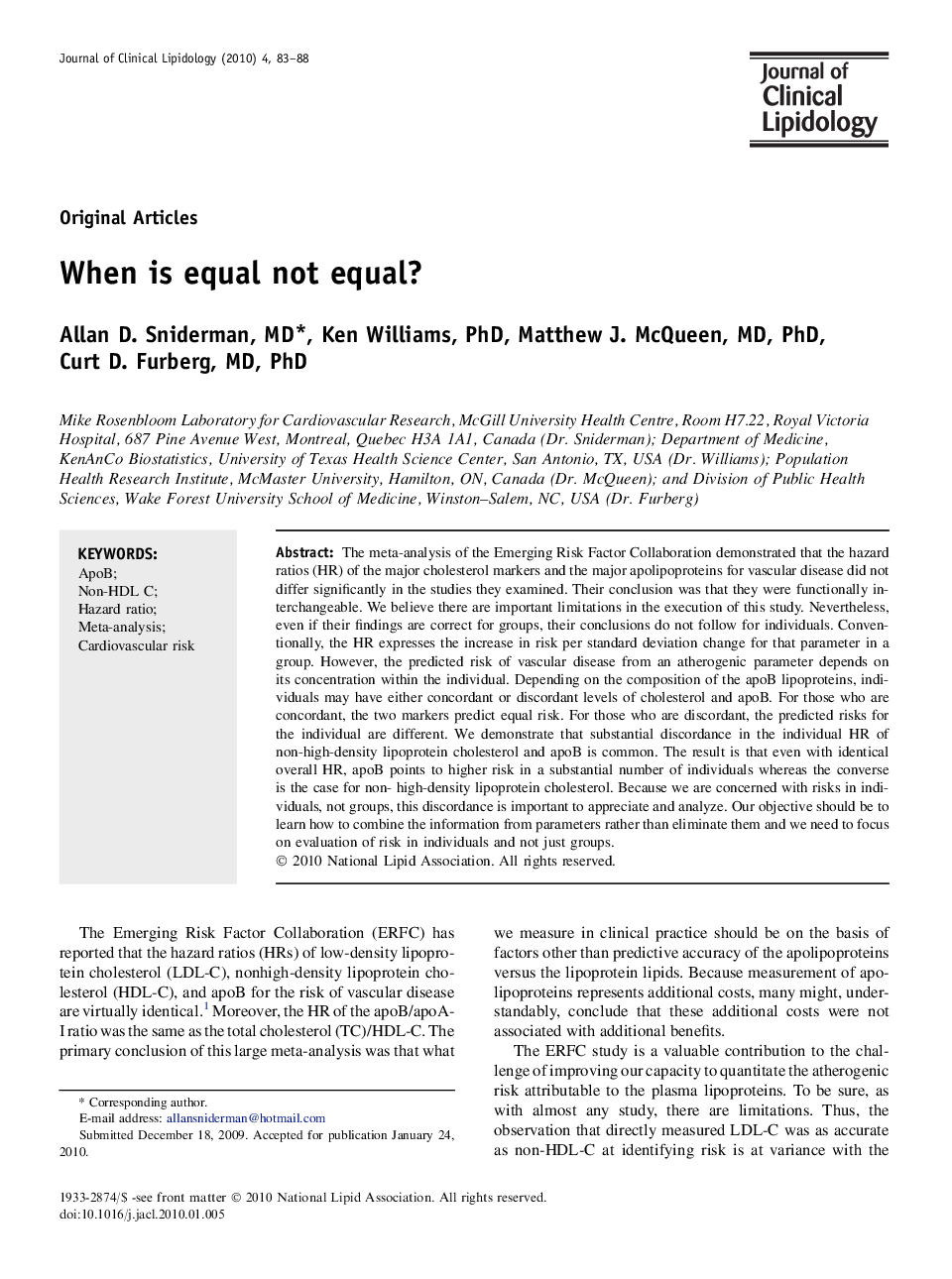| Article ID | Journal | Published Year | Pages | File Type |
|---|---|---|---|---|
| 2966371 | Journal of Clinical Lipidology | 2010 | 6 Pages |
The meta-analysis of the Emerging Risk Factor Collaboration demonstrated that the hazard ratios (HR) of the major cholesterol markers and the major apolipoproteins for vascular disease did not differ significantly in the studies they examined. Their conclusion was that they were functionally interchangeable. We believe there are important limitations in the execution of this study. Nevertheless, even if their findings are correct for groups, their conclusions do not follow for individuals. Conventionally, the HR expresses the increase in risk per standard deviation change for that parameter in a group. However, the predicted risk of vascular disease from an atherogenic parameter depends on its concentration within the individual. Depending on the composition of the apoB lipoproteins, individuals may have either concordant or discordant levels of cholesterol and apoB. For those who are concordant, the two markers predict equal risk. For those who are discordant, the predicted risks for the individual are different. We demonstrate that substantial discordance in the individual HR of non-high-density lipoprotein cholesterol and apoB is common. The result is that even with identical overall HR, apoB points to higher risk in a substantial number of individuals whereas the converse is the case for non- high-density lipoprotein cholesterol. Because we are concerned with risks in individuals, not groups, this discordance is important to appreciate and analyze. Our objective should be to learn how to combine the information from parameters rather than eliminate them and we need to focus on evaluation of risk in individuals and not just groups.
